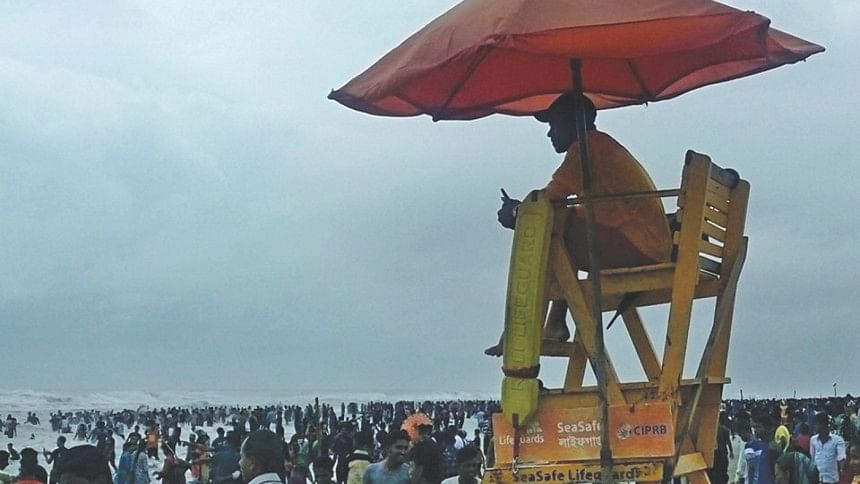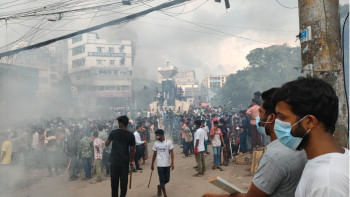Lifesavers on the beach

As the sun lights up the horizon, Osman Goni starts patrolling the Cox’s Bazar sea beach. While waves crash at his feet, his eyes keep searching the distance for anyone who might need help. A team of 26 lifeguards stands ready for his order to rescue people lost in the waves.
Osman and his team of lifeguards of the SeaSafe saved 226 people from drowning in the Bay of Bengal since 2016, when the project launched.
No professional lifeguard services existed in any Bangladeshi beach before the project was implemented by the Centre for Injury Prevention and Research, Bangladesh (CIPRB).
Osman, lifeguard supervisor of the project, described a rescue operation his team carried out on July 18.
“Around 6:00 am, one of my team members, Alamgir called me about a boat floating upside down at Sugandha point,” he recounted. Alamgir, assisted by some locals, then recovered four bodies from inside the vessel.
The team was already on high alert after learning from social media the previous night about several trawlers that had gone fishing but didn’t return.
Finding the bodies, they began looking for survivors and found a man lying unconscious two and a half kilometres from the vessel and another one some 8-10 kilometres away. Both of them had survived.
Two days later, they saved two tourists from drowning at Kalatali beach.
Over the last three years, the team found 17 children lost on the beach and handed them over to the Tourist Police.
Although there is no official data on the number of deaths from drowning in sea, the national annual death from drowning, according to Bangladesh Health Injury Survey 2016, is 14,500.
Aiming to decrease the number of drowning, the CIPRB with help of Royal National Lifeboat Institute trained local young men aged over 18 and appointed them as lifeguards of the SeaSafe.
The seven-day training provided by international experts includes surfing, which is useful for rescue operations up to 10km offshore.
From sunrise to sunset, the lifeguards, in their internationally-recognised yellow vests, patrol five of the 120-km long beach in Cox’s Bazar. The CIPRB has built three watchtowers at Laboni, Kalatoli and Sugandha.
“Before leaving the beach at sunset, we send out signals for tourists to come out of the water. If people do not listen to us, we inform the tourist police,” Osman said, adding the Bangladesh Coast Guard and local administration provide support when needed.
In 2016, tourist police requested the CIPRB to send a group of lifeguards for guarding a beach area during the “Mohabaruni Snan (Holy Bath)”, a religious ceremony observed by the Hindus.
However, the CIPRB does not consider its interventions adequate. The organisation is keen on working with the government to scale up the services to cover the entire length of the Cox’s Bazar beach.
Aminur Rahman, deputy executive director of the CIPRB, said he recently met civil aviation and tourism ministry officials to plan a partnership project to extend the lifeguard services in phases to all sea beaches of the country.
If the government develops the project, the CIPRB will provide all technical support,he added.
The perceived safety provided by lifeguards will draw more local and foreign tourists, he said.
Joint Secretary (Tourism) Humayun Kabir said since government wants to develop Cox’s Bazar as a tourist hub, safety is a concern.
“We will work on the issue of drowning at the beach,” he said, adding his department will encourage organisations already working on the matter.

 For all latest news, follow The Daily Star's Google News channel.
For all latest news, follow The Daily Star's Google News channel. 






Comments